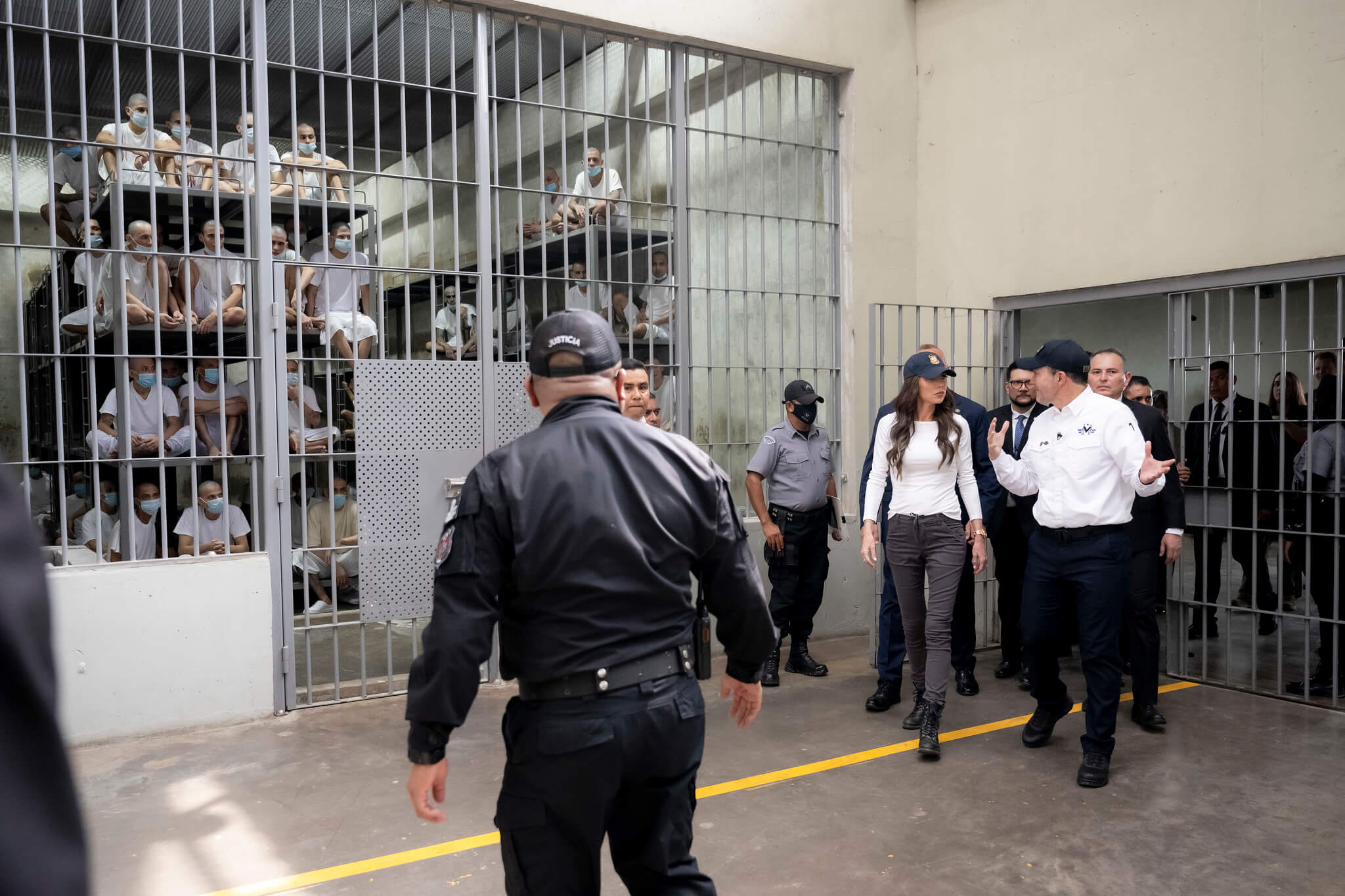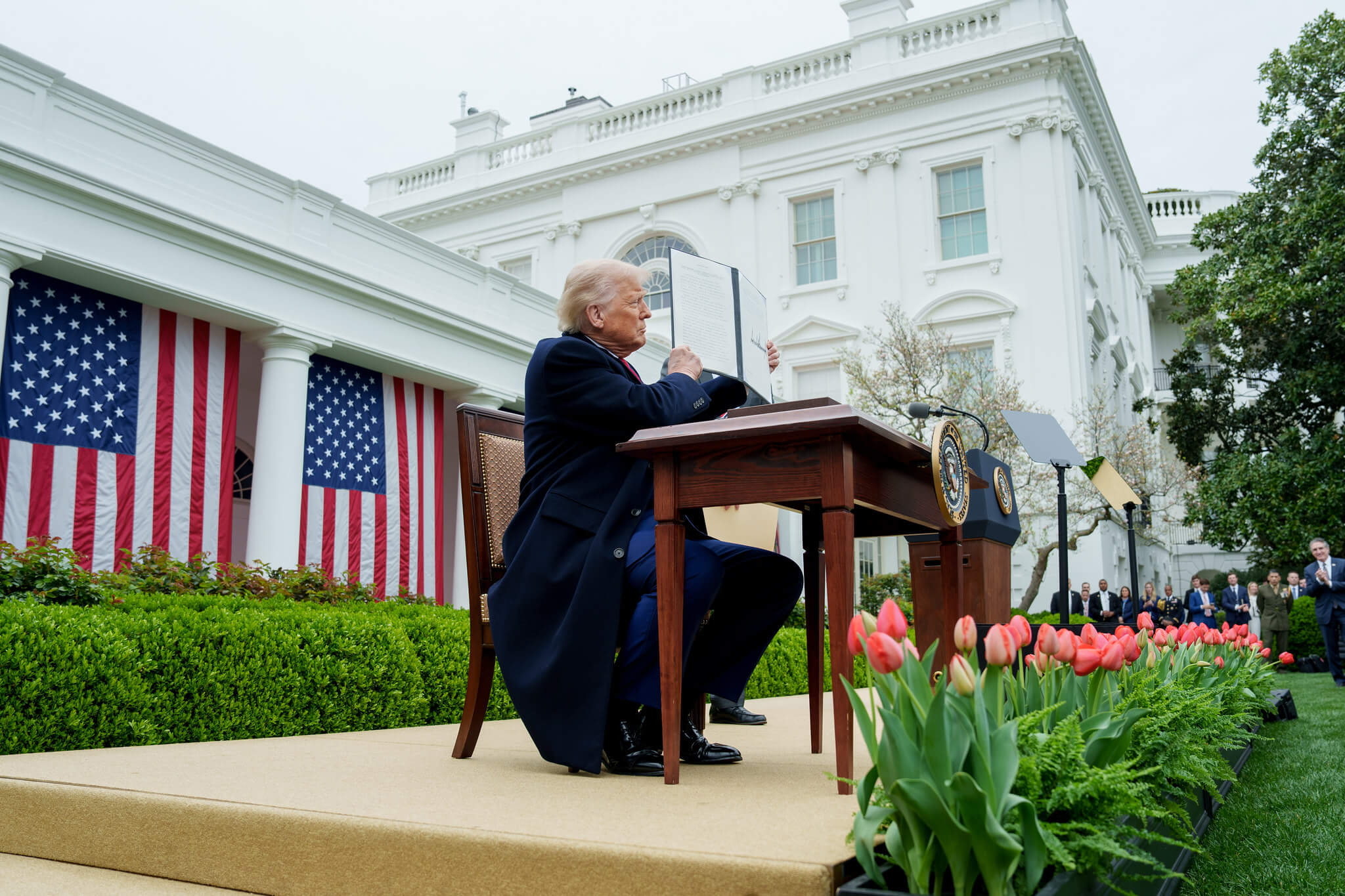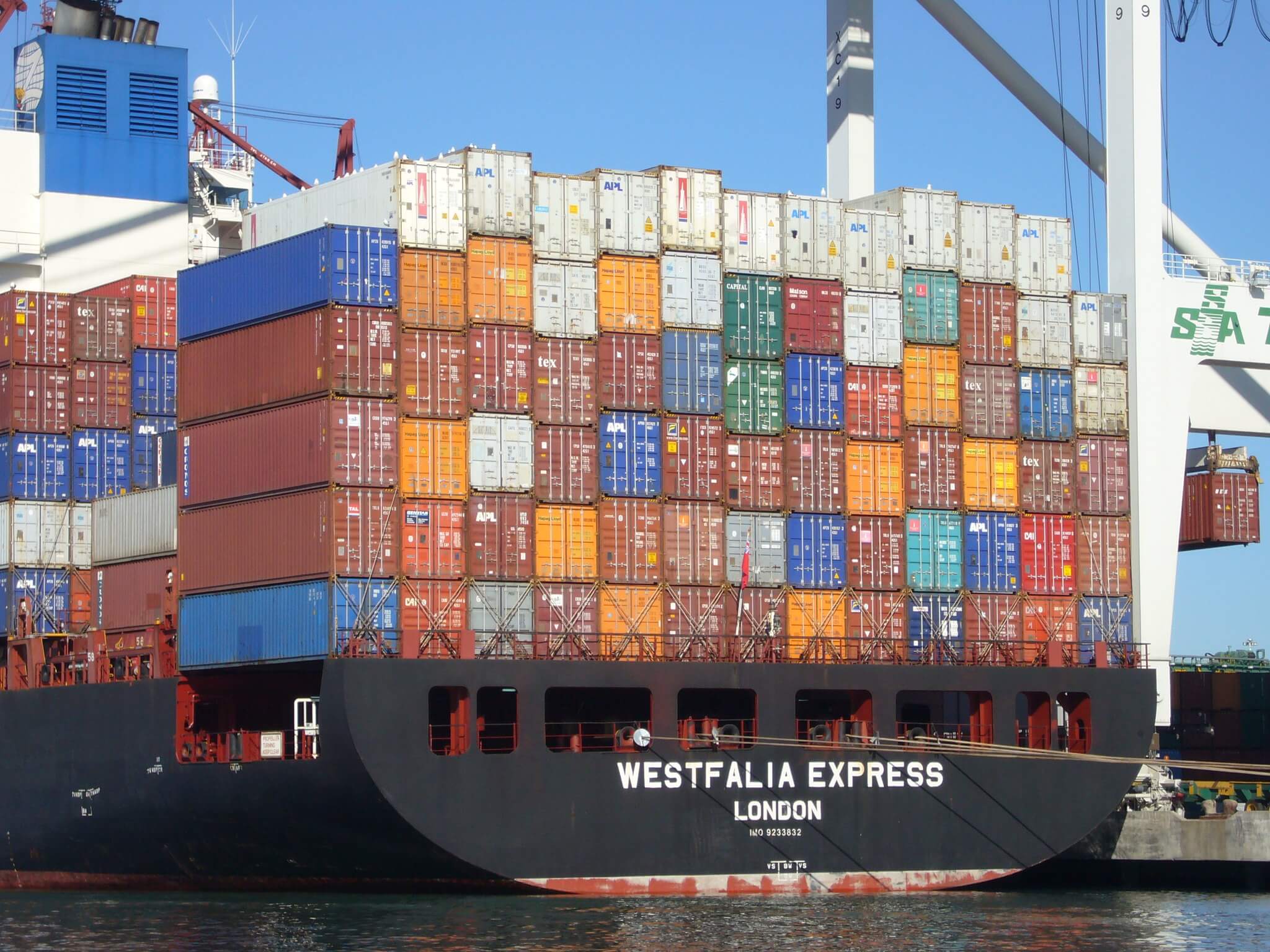Mixed Signals on Alleged Alien Enemies

Published by The Lawfare Institute
in Cooperation With

The Supreme Court’s decision Monday in Trump v. J.G.G. has sent a strange set of mixed messages to the Trump administration concerning its invocation of the Alien Enemies Act to ship hundreds of Venezuelan migrants to a prison in El Salvador.
On the one hand, the justices unanimously affirmed that people slated for deportation under this initiative are entitled to receive judicial review and, hence, to receive reasonable notice of their designations to facilitate their ability to contest the planned actions against them.
On the other hand, it remains to be seen how robust the process the court sketched out will prove to be for those not already deported. And the move probably leaves those who have already been shipped to El Salvador entirely without remedy.
What’s more, the Court seems to turn a blind eye to the administration’s apparent violation of a district court order three weeks ago to turn around planes that were flying these people out of the country—meaning that the Court may be leaving hundreds of Venezuelans in a Salvadoran prison and the Trump administration unaccountable for putting them there in an action of dubious legality.
The Trump administration has argued that its invocation of the Alien Enemies Act allows it to remove individuals it identifies as members of the Venezuelan gang Tren de Aragua without any legal process—skipping over the normal removal process under the Immigration and Nationality Act to rapidly spirit people out of the country and, in this case, into the custody of guards at a notorious Salvadoran prison.
All nine justices rejected this argument. In a per curiam ruling, the Court held that detainees “subject to removal under the Act” must receive notice to that effect, “within a reasonable time and in such manner as will allow them” to seek legal review of their case before they are removed.
Significantly, however, the five justices who signed onto the per curiam ruling held that these detainees must challenge their detentions by seeking a writ of habeas corpus, rather than through any other legal mechanism.
For this reason, they vacated the temporary restraining orders granted by Chief Judge James Boasberg of the U.S. District Court for the District of Columbia, which had blocked the administration from moving forward with the removal of any individual in U.S. custody subject to removal under the Alien Enemies Act. The ACLU had sought these orders under the Administrative Procedure Act, rather than through habeas. Crucially, this requirement that detainees pursue relief through habeas also means that they must challenge their detentions in the district of their confinement, as the Supreme Court held in Rumsfeld v. Padilla back in 2004.
In a brief concurrence, Justice Brett Kavanaugh noted the history of courts’ use of habeas to review challenges to removal, rather than detention, particularly in context of “transfers of Guantanamo and other wartime detainees.” Meanwhile, the three liberal justices, joined in part by Justice Amy Coney Barrett, dissented, reasoning that review should be available under the APA and not only through habeas. But importantly, as Justice Sotomayor’s dissent notes, “To the extent the Government removes even one individual without affording him notice and a meaningful opportunity to file and pursue habeas relief, it does so in direct contravention of an edict by the United States Supreme Court.”
What Happens Now?
On its face, the Court’s approach should not make a dramatic difference for migrants not yet deported but who face removal under President Trump’s Proclamation of March 14, 2025. The first time around, these detainees filed an emergency petition in Washington D.C. Under the Court’s approach, in the future, they will need to file a habeas petition in whatever jurisdiction they are being detained. Some have already filed in New York. Some have filed in Texas. Some may have to file elsewhere.
The good news for those alarmed by the invocation of this wartime law during peacetime is that the president’s proclamation is so flamboyantly unlawful that it may not matter, at least with respect to adjudicating the law, where it is litigated or in what context. (It may matter very much to the individuals whose rights are being violated, both in terms of the nature of their relief and the duration of their treatment.) Whether under the Administrative Procedures Act in Washington D.C. or whether in a habeas proceeding in Texas or New York or somewhere else, the Alien Enemies Act still applies only “whenever there is a declared war between the United States and any foreign nation or government, or any invasion or predatory incursion is perpetrated, attempted or threatened against the territory of the United States by any foreign nation or government.”
These conditions simply do not exist. And no matter where one litigates the matter, or under what cause of action, the president’s proclamation still states with almost laughable implausibility that the Venezuelan criminal gang Tren de Aragua “is perpetrating, attempting, and threatening an invasion or predatory incursion against the territory of the United States. TdA is undertaking hostile actions and conducting irregular warfare against the territory of the United States both directly and at the direction, clandestine or otherwise, of the Maduro regime in Venezuela”—as though this claim remotely satisfies the terms of the statute.
There is some reason to hope that merely having to give detainees notice and the opportunity to litigate their cases—rather than being whisked away summarily—will provide the Trump administration a disincentive from trying to use this approach any further. Perhaps, once the administration has to actually go through courts, the illicit delight of wielding the Alien Enemies Act unilaterally will diminish.
There is reason to hope as well that when the cases that are now being forced into habeas proceedings get reviewed, the courts will decline to tolerate this abuse of government power.
The optimistic scenario is that—having clarified that due process applies to these cases, and thus made proceeding under the AEA less attractive, and having sketched out a procedure in which prospective detainees can challenge their detentions and removals under the administration’s absurd application of an 18th century statute—the Court has created a process in which the government will refrain from using the AEA any further and in which the courts can declare it unlawful in due course under the cases that remain.
As of Wednesday, there are a few initial signals that this process may be kicking into gear. In the U.S. District Court for the Southern District of New York, Judge Alvin Hellerstein blocked the administration from removing Venezuelans detained in his district without first giving them an opportunity to bring habeas claims before him. In the Southern District of Texas, pursuant to another habeas petition, Judge Fernando Rodriguez issued a temporary restraining order preventing the deportation of any individual subject to removal in the El Valle Detention Center and—crucially—forbade the government from moving anyone out of his division of the district. For now, at least, individuals in these jurisdictions are safe from removal, and they were able to secure that safety through habeas.
But the Supreme Court’s approach has a number of problems that may well encumber this optimistic scenario from playing out. For one thing, there are a lot of opportunities for gamesmanship on the part of the government in the vague process the Court has mapped out—and the government, in this very case, has shown a willingness to play games with court orders, the timing of the proclamation itself, and other matters.
The Supreme Court requires that prospective deportees be given “notice,” but what counts as reasonable notice here? How much time must a detainee get in order to secure counsel and file a petition? Does the detainee even have a right to counsel? The Court doesn’t really say. More generally, what is “due process” in this context? The term is well-defined in criminal law, and less generously in immigration law. But the country has only invoked the Alien Enemies Act three times in its history—during World War I, World War II, and the War of 1812. Are we looking to those experiences to define due process for supposed Tren de Aragua deportees in a non-war today?
Another form of gamesmanship is forum shopping, and the Court’s opinion allows the government to choose its court by moving detainees around—at least before they file suit. The U.S. Court of Appeals for the Fifth Circuit is a friendly forum for the Trump administration—and a circuit where many ICE detention centers happen to be located—so we may see the government move detainees there where it can.
Habeas also has certain limitations vis-a-vis other causes of action. For example, under the Administrative Procedures Act, one can challenge the government’s action as arbitrary and capricious. In habeas, the challenge is to the lawfulness of one’s detention, requiring a more fact-intensive, typically individualized inquiry; proceedings can take much longer or apply more narrowly as limited to certain facts.
Moreover, the law is somewhat unsettled as to whether and to what extent a habeas action can be certified as a class action—a matter that is important here because many of these detainees will not have lawyers of their own and will be able to challenge their deportations and detentions only as part of a class.
Finally, there is the question of what precise remedy is available if habeas petitions are successful. Normally, habeas petitions seek release from custody. But here, look for the government to dump successful habeas petitioners, where it can, into immigration proceedings under the Immigration and Naturalization Act, likely without releasing them—an approach which may be more viable with some of them than others.
While the impact on prospective detainees is thus an open question, the impact on the 260 Venezuelans who were already deported under the AEA is likely catastrophic. The reason will be obvious to anyone who followed the Guantanamo habeas cases: the courts have never found habeas jurisdiction for non-citizens held abroad—except at Guantanamo—and transfer to the custody of a foreign government likely precludes habeas jurisdiction as well. This latter point is a bit fuzzy, as a detainee in the hands of a foreign government might be found to be in the “constructive custody” of the United States if the U.S. can be shown to be pulling the strings. The geographic problem, by contrast, is a tough one.
After the Supreme Court found habeas jurisdiction at Guantanamo, the D.C. Circuit confronted the obvious next question: what about detainees held at the U.S. air base at Bagram in Afghanistan? In a case called Al Maqaleh v. Gates, the D.C. Circuit denied that habeas extended there.
There are possible ways to distinguish Al Maqaleh from the current situation: Key to the D.C. Circuit’s holding was the fact that Bagram was in an active war zone. The detainees held there were not deported from the United States but captured abroad. And perhaps most importantly, they weren’t sent there specifically to evade the habeas jurisdiction of the courts in a bad faith display of gamesmanship and in specific violation of a court order by the same government that then argues against jurisdiction even as it pays a foreign government to hold people.
Still, a prison in El Salvador is going to be a tough sell for habeas jurisdiction, particularly given the current composition of the Supreme Court.
Even if they can file, there is the question of where precisely these detainees will be able to file their cases, given that there is no U.S. District Court for the District of El Salvador. Here, the Guantanamo precedents once again provide some guidance: under that body of case law, there’s a good argument that the proper venue is in the District of Columbia. It’s thus possible that Judge Boasberg might retain jurisdiction over this slice of the case, even as the portion involving detained Venezuelans still within the United States will no longer be in his court. In a minute order issued the day after the Supreme Court’s decision, he instructed the plaintiffs to file briefs by April 16 “indicating whether they believe that they still have a basis to proceed on their Motion for Preliminary Injunction in this Court.”
But the most likely result for this large group of people in El Salvador is that they are out of luck; having been disappeared from U.S. custody and rendered to another country to a facility known for brutal treatment, no U.S. court can do anything about it. If this is allowed, it’s not entirely clear what stops the government from doing the same thing to a U.S. citizen—though some of the arguments against jurisdiction would become inoperative if a citizen were involved. As long as the government gets the targeted person out of the United States and into foreign detention fast enough, before a court can issue an order, what remedy does such a person have?
These questions have important potential interaction with another deportation-to-El-Salvador case, on which the Supreme Court might rule at any moment—that of Kilmar Abrego Garcia. Abrego Garcia, a Salvadoran not subject to the Alien Enemies Act proclamation, was deported to the same prison on the same day as the J.G.G. petitioners as a result of what the administration acknowledges now to be an error. A district judge in Maryland has ordered the administration to facilitate his return to the United States. And the Fourth Circuit Court of Appeals unanimously declined to stay her order. Chief Justice John Roberts, however, slapped an administrative stay on the matter, and the Court is currently mulling whether the lower court can order the executive branch to endeavor to retrieve him.
This case and J.G.G. interact because, at least for the J.G.G. petitioners who have already been deported, the apparent remedy is the same: a court order that the government seek to undo its unlawful deportation and get the deportees back. The Supreme Court dealt the J.G.G. petitioners a nasty blow by implying that no American court has jurisdiction over their legal claims. It would be a particularly nasty second blow to hold that even if one did, no remedy is available to them because the government’s rendering them to foreign detention, while unlawful, succeeded in depriving them of one.
What About Contempt?
Meanwhile, the Supreme Court also leaves unanswered a crucial question: what can or should be done about the government’s apparent defiance of Judge Boasberg’s temporary restraining order (TRO)?
When the proceedings below were stayed pending appeal of that TRO, Judge Boasberg had been poised to rule on his Mar. 20 order to show cause as to why the government did not violate his order to return the detainees then en route to El Salvador. The government had sought to delay disposition of the matter by invoking the state secrets privilege in response to the judge’s questions about the basis for its action. And the whole ordeal involved an inquiry into the exact timeframe of when detainees were rounded up, when the proclamation was issued, when flights took off, and when Boasberg scheduled his hearing and issued his order—and precisely who decided not to follow that order.
In a hearing on April 3, Boasberg strongly suggested that he would find the government in contempt. He asked the government lawyer, Drew Ensign, if the government would want an opportunity to “purge the contempt”—in other words, take remedial action—and what that might look like. Ensign said he didn’t know. Boasberg also indicated that he had serious doubts about the viability of the government’s claim that certain information was subject to the state secrets doctrine.
He ended the hearing with a promise to review the material and issue an order regarding contempt, but said the parties shouldn’t expect the order until the following week—that is, the same week that kicked off with the Supreme Court’s ruling on Monday vacating the very TRO that the government may have defied. For all we know, Boasberg’s contempt order is fully drafted by now. So the question is, can he still issue it given that the Supreme Court has now said that his court was the wrong one to issue the TRO in the first place?
The answer to this question is less than entirely clear. Case law suggests that a judge loses the ability to make a contempt finding once he or she has lost jurisdiction over a case. And the Supreme Court here vacated Judge Boasberg’s order on the grounds that Washington, D.C. was an improper venue for the case.
But Judge Boasberg is proceeding carefully on the question of his own jurisdiction, and is now awaiting briefing from the ACLU on the subject. Untangling the legal issues raised by the Supreme Court’s ruling with respect to the detainees in El Salvador may take some time, during which Boasberg may retain jurisdiction over the case—and during which he could potentially issue a contempt order.
So at least until Judge Boasberg or some higher court determines that he lacks jurisdiction over the matter, the proper question is whether a contempt ruling can survive vacatur of the order whose violation gave rise to the contempt. There, Supreme Court precedent suggests that it might: it has repeatedly found that parties must obey court orders even if the order is later deemed unlawful by an appellate court. In those cases, however, the contempt ruling had already been issued by the time the underlying order was nullified; here, the conduct giving rise to the contempt would have preceded the order’s nullification, but the actual ruling on contempt still has not been issued. Regardless, it is certainly plausible that Boasberg can move forward with a finding of contempt notwithstanding the Supreme Court’s opinion—but the matter will undoubtedly be the subject of additional litigation.
In brief, it remains to be seen whether the Supreme Court’s action turns out to create an orderly process for holding the administration accountable, or whether it only appears to do so while in fact granting impunity for egregious abuses. Perhaps the most likely possibility is that the Court has given the lower courts a green light to police abuses of the Alien Enemies Act going forward—but along the way, it tacitly accepted those abuses the administration has already used this proclamation to perpetrate.







